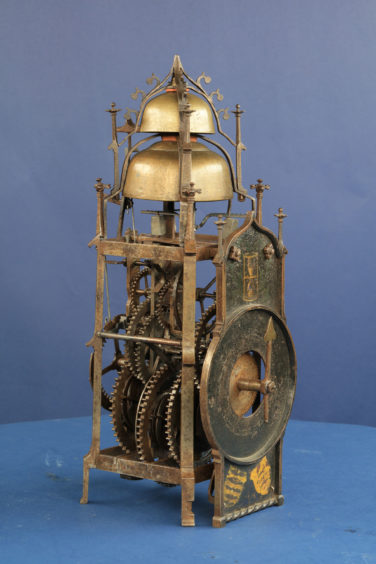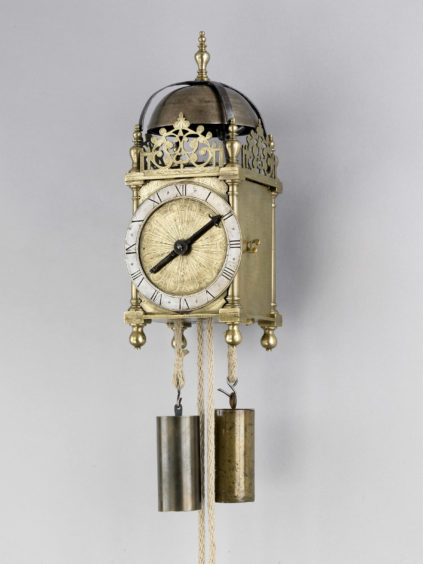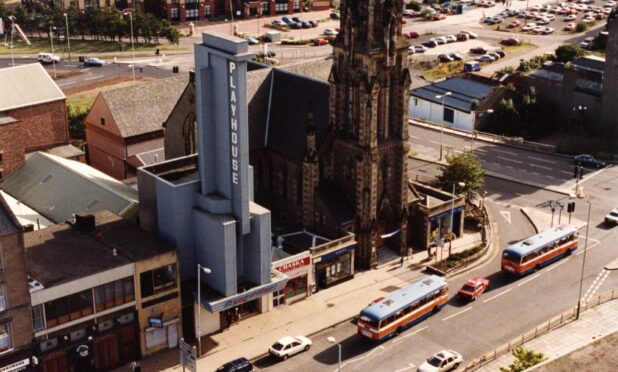A new exhibition at the National Museum of Scotland celebrates the golden age of British clock making. Caroline Lindsay finds out more
A special display of rare and significant historical timepieces telling the story of a golden age of innovation in British watch and clock making is currently on show at the National Museum of Scotland. The Luxury of Time: Clocks from 1550-1750 will feature objects from the private collection of Dr John C Taylor OBE, an engineer, entrepreneur and one of the UK’s most prolific inventors.
Dr Tacye Phillipson, senior curator of science at NMS, explains: “This display shows 24 timepieces kindly lent by Dr John C Taylor and explores the history of early British clock making.
“The items on show range from a 16th Century clock made all in wrought iron by a very skilled blacksmith, to ornate watches and the sundials which would have been necessary for setting clocks and watches to the right time.
“Some of these pieces from the cutting edge of technology were also exquisitely decorated ornaments,” she continues.
The 17th Century was a time of huge innovation in clock and watch mechanism and London was one of the centres of this.
“Before the 17th century, the main centres of clock and watch making were in mainland Europe, but many makers fled to Britain to avoid religious persecution and others came for commercial opportunities,” Dr Phillipson explains.
So what kind of materials were used to make these clocks?
“The mechanisms of these clocks were made from iron and/or brass and steel,” says Dr Phillipson. “The cases were made from all sorts of materials – most of the cases in this exhibition were made of metal, especially gilded brass which was much cheaper than solid gold, and also less likely to be melted down to make something else.
“One tiny watch is in a case hollowed out of a clear quartz crystal.”
The curator points out that no discussion would be complete without mention of Thomas Tompion (1639-1713).
“He brought mass production to high quality watches in a way no maker had before. His workshop was responsible for about 5000 watches and another 650 clocks during his life.
“Three of these are on display in the exhibition, together with a sundial also signed by him which would have been used for setting clocks and watches to the right time.”
Because clocks and watches were expensive to buy and combined the high technology of the day they were the ultimate status symbol.
“In the early 17th Century the lantern clock was invented which was rather simpler and faster to make, though it still took weeks of skilled craftsmanship. This brought a clock within the reach of a prosperous merchant or farmer, rather than only the wealthy,” says Dr Phillipson.
Putting together a display like this threw up more than a few challenges. “There were so many possible stories to tell about these clocks and watches so one of the challenges was what to leave out,” the curator reveals.
“Many of the fascinating details of the mechanism are hidden away inside their cases, and just so tiny that they were a challenge to display,” she continues.
“One watch, by Thomas Tompion, is held within its case by secret latches to stop other makers from copying the mechanism. I hoped to be able to reveal its hidden secrets with a photograph, but it wasn’t possible to open the watch for this. The latches are still doing their job of preserving the mechanism from prying eyes – though their secrets have been worked out and the watch opened for conservation.”
One of the stars of the show is a watch made in about 1620 by the Scot, David Ramsay, who appears to have learnt clock and watchmaking in France.
“This small watch has seven separate features including time, date, phase of the moon and sign of the zodiac,” says Dr Phillipson.
“The inside of the cover is engraved with the coat of arms and portrait of James VI & I, probably marking this as a piece commissioned by the King as a gift. Another clock has a minute hand which takes three hours to go round once – you need to pay attention to read the time on it! But it wouldn’t have confused people when it was new as minute hands weren’t yet a standardised feature of clocks.”
Her own favourites include the tiniest watch in the exhibition. “Knowing each minute gear was made with hand tools, and then the whole fit into its case carved out of rock crystal,” she says.
“This wasn’t a pocket watch – rather it would have been worn on show as a piece of jewellery, either around the neck or perhaps hanging at the owner’s waist.
“It has been a delight to get to know this fantastic collection and work with such interesting and important clocks and watches. The time is such an everyday part of our lives now that I hope visitors will enjoy looking back to when this had just started and easily knowing the time was a luxury.”
The Luxury of Time: Clocks from 1550-1750 runs until January 26 at the National Museum of Scotland in Edinburgh. Science Saturday on November 23 will feature events and activities exploring time and clocks for both family and adult audiences.
















